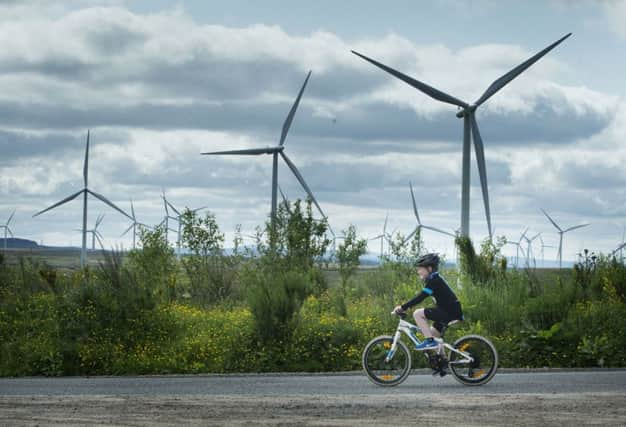Only one winner in energy debate


There is much lamenting over the closure or mothballing of fossil fuel power plants, there are complaints about how subsidies are being “wasted” on wind farms and there are calls for more nuclear power in Scotland. Yet such talk ignores 21st century realities, including economic and practical considerations. Renewable energy must lie at the heart of our strategy to make energy in Scotland sustainable and secure. Four key factors must underpin our understanding of what we need.
First, we need to cut carbon dioxide emissions whilst at the same time reduce our reliance on imported natural gas. This means that renewable energy and energy efficiency should be priorities.
Advertisement
Hide AdAdvertisement
Hide AdSecond, Scotland is connected to the British electricity system, so it is not relevant to argue for self sufficiency in power station cover in Scotland. Scotland is an integral part of the British electricity system. It is thus nonsense to suggest we need this or that power station to continue operation in a particular place.
Third, the reason that power plants are ceasing operation is not because there is an electricity crisis, but a product of the opposite, ie that electricity demand in the UK has greatly fallen. It is good that fossil production and carbon emissions are falling and also being replaced by renewables. The National Grid is managing this system by contracting for as much reserve plant as is necessary, and if some plant is being left mothballed, this means we have more capacity than is needed – this is not a crisis.
Fourth, despite complaints made about alleged large subsidies being earned by onshore wind through the Renewables Obligation (RO), the facts speak otherwise. Under the UK government’s new Electricity Market Reform “contracts for differences”, onshore wind contracts were won in the February auction organised by the government for around £80 per MWh for just a 15-year contract.
What is a lesser well known fact is that even under the RO onshore wind is not being paid more than around that figure now (£80 per MWh). You can calculate this by inspecting the results of the auctions for renewable obligation certificates (ROCs). These come out at around £42 per MWh recently, and onshore wind receives 90 per cent of this figure, say £38 per MWh. Add to this the wholesale electricity price, which is currently running at around £42 per MWh. Add the two things together, and, bingo, you get £80 per MWh.
Compare this to the price being offered to Hinkley C, which in 2012 prices is £92.50 per MWh (for 35 years underwritten by a £10 billion loan) which in current prices is £94 per MWh. This is underpinned by a £10bn loan guarantee from the government – which gives nuclear power a big state subsidy compared with windpower since wind farms have to borrow at market interest rates without government guarantees.
In reality nuclear power is proving very difficult to deliver, with plans for Hinkley C in Somerset suffering continual commercial setbacks. Experience of trying to build plant like Hinkley C in France and Finland suggests that the project may only now happen if the UK government offers a “blank cheque’ to nuclear developers.
It should also be borne in mind that nuclear power plants make the task of integrating renewable energy a lot more, not less, difficult since nuclear power plants are given “despatch priority” which means that wind power plant have to be turned off if there is too much electricity on the system.
This leads to complaints that wind operators are being paid “constraint payments” when in fact the fault that this is happening is because of the technical and economic shortcomings of nuclear plants which are not going to be turned off.
Advertisement
Hide AdAdvertisement
Hide AdIn the short to medium term there is plenty of flexibility, including using reserve power plants, demand management and new interconnectors for the UK to balance fluctuating renewables. Big strides towards development of cheaper storage technologies for electricity are being made, which bodes well for the longer term integration of renewable sources like wind power and solar power. Let us embrace the realities of the new renewable technologies.
l Dr David Toke is reader in energy politics at the University of Aberdeen and Professor Peter Strachan is strategy and policy group lead within the department of management at Robert Gordon University